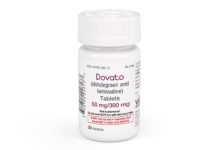With three in ten gay men living with HIV engaging in chemsex in the last year in the UK, understanding its association with the country’s HIV and STI epidemics is critical to put an end to new infections.
Results from a recent analysis published in HIV Medicine have sought to understand the relationship between chemsex – the use of drugs to enhance sex – and HIV in the UK. It is the first study to quantitatively investigate this link, providing important evidence to inform policy and clinician’s work.

Photo: avert.org
Until recently, new HIV infections among men who have sex with men (sometimes referred to as MSM) had been on the rise in the UK – with 3,570 new infections in 2015 alone.1 Between 2012 and 2015, STI diagnoses also rose sharply, with new gonorrhoea infections increasing by 105%, syphilis by 95% and chlamydia by 52%.
While there are many factors that contribute to this rise in new infections, the growing use of drugs to enhance sex is becoming a particular concern.
Qualitative reports suggest that chemsex is becoming increasingly popular among some gay, bi and other men who have sex with men. It has also been linked to outbreaks of shigella among men who have sex with men in London, as well as bacterial STIs and HIV. A recent editorial in the BMJ
(formally known as the British Medical Journal) called for chemsex to be a public health priority in the UK – but noted a distinct lack of quantitative data to inform such policy decisions.
Researchers from Public Health England, Imperial College London and University College London (UCL) used data from a survey of people living with HIV in England and Wales, ‘Positive Voices’ to discover prevalence of chemsex among sexually active HIV-positive men who have sex with men in the UK, and risk factors for chemsex in this group.
The survey revealed that 29.9% of gay men living with HIV reported having had chemsex in the last year, and 10.1% reported having had ‘slamsex’– where drugs are injected. Mephedrone (MCAT) and GHB/GBL were the most commonly used drugs for chemsex, while crystal meth was the most commonly used in slamsex.
They found that chemsex was most common among those aged between 35 and 54, and those living in London. Other risk factors included smoking, a diagnosis of depression or anxiety, and drug use outside of sex.
Men who practiced chemsex were also more likely to have anal sex without a condom, including anal sex without a condom with someone with an unknown HIV status. They were more likely to have a bacterial STI and hepatitis C, and had more sexual partners in the previous year.
This is the first nationally representative estimate of chemsex among HIV-positive MSM accessing care in the UK. Despite low numbers of survey respondents (392), the authors argue the sample is broadly representative of the target population.
The authors note: “Attention must therefore be paid not only to the association between chemsex, STIs, the hepatitis C epidemic, and behaviours that are driving the HIV epidemic, but also to its impact on the overall health of HIV-positive MSM… It is becoming ever more important to address chemsex as a public health priority.”


 ПОИСК ПО САЙТУ
ПОИСК ПО САЙТУ  поиск по ресурсному центру
поиск по ресурсному центру 



